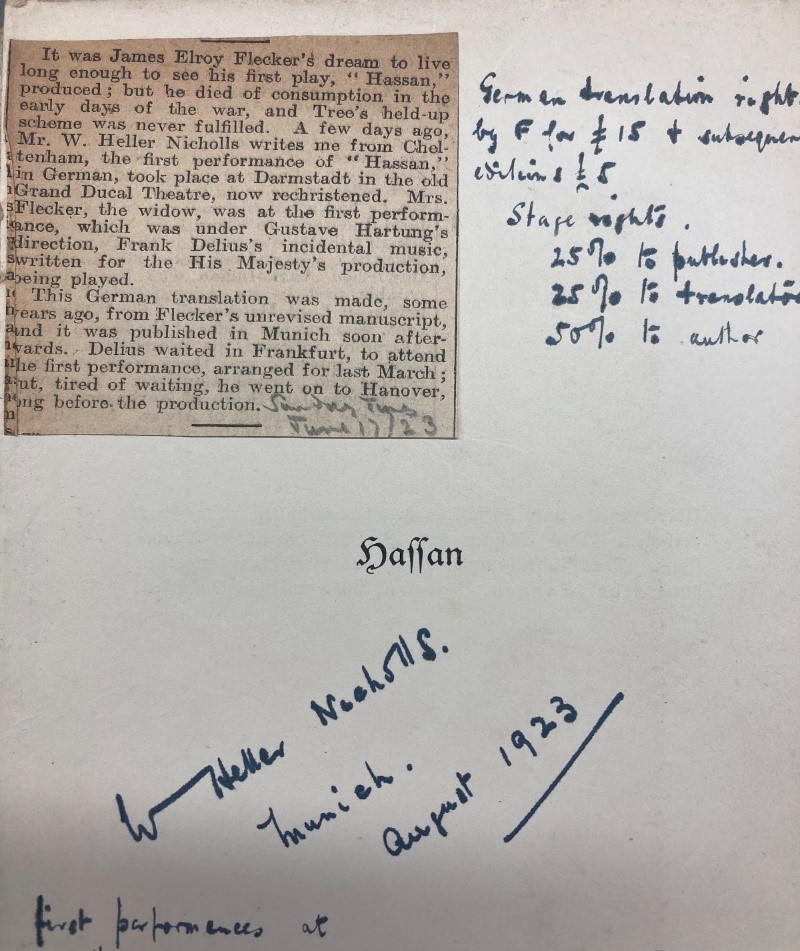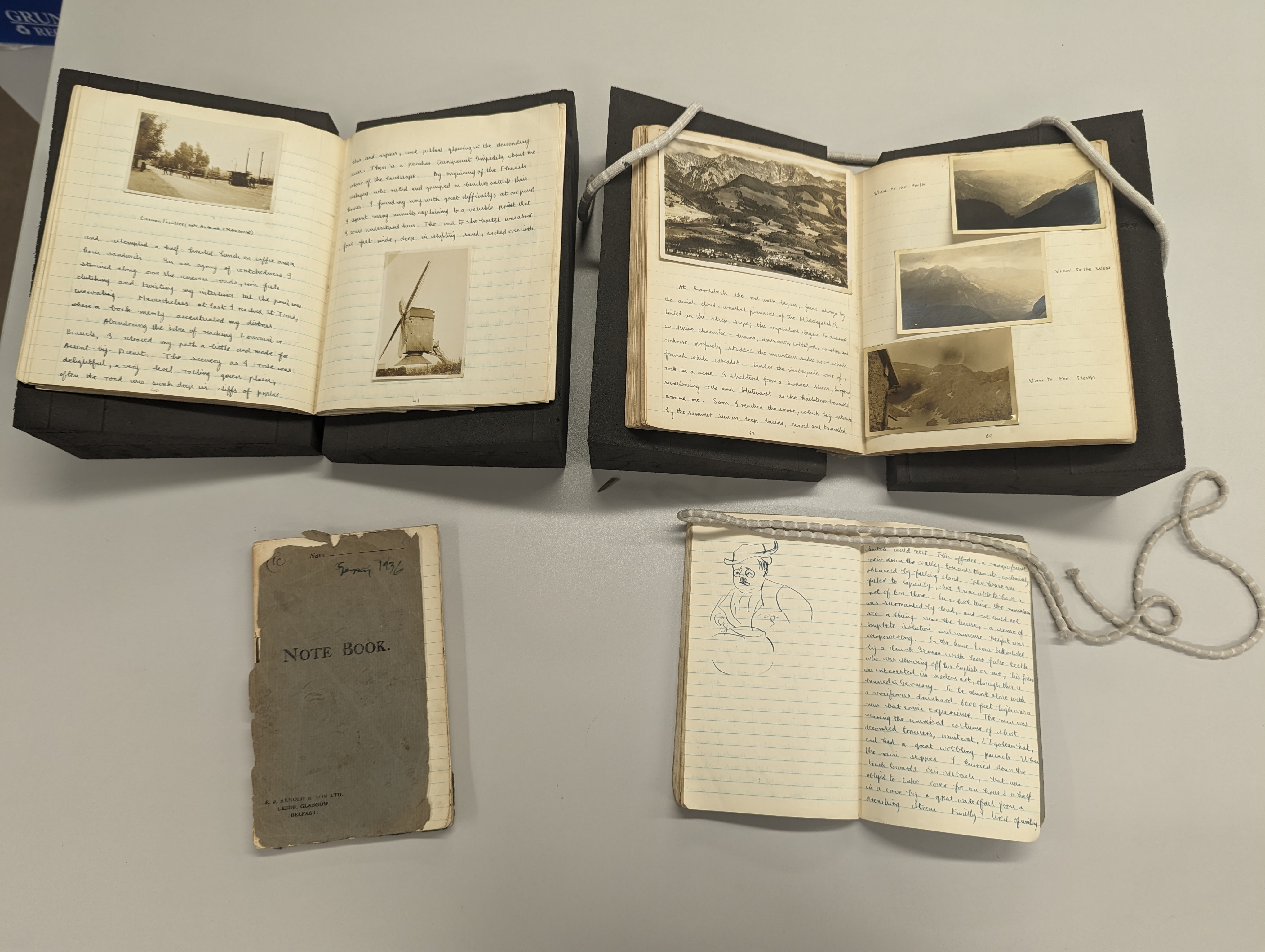Guest post by Matthew Bell, Summer intern in the Modern Archives & Manuscripts Department
If you have ever wondered how future historians will reconstruct and analyse our present society, you may well have envisioned scholars wading through stacks of printed Tweets, Facebook messages and online quizzes, discussing the relevance of, for instance, GIFs sent on the comment section of a particular politician’s announcement of their candidacy, or what different E-Mail autoreplies reveal about communication in the 2010s. The source material for the researcher of this period must, after all, comprise overwhelmingly of internet material; the platform for our communication, the source of our news, the medium on which we work. To take but one example, Ofcom’s report on UK consumption of news from 2022 identifies that “The differences between platforms used across age groups are striking; younger age groups continue to be more likely to use the internet and social media for news, whereas their older counterparts favour print, radio and TV”. As this generation grows up to take the positions of power in our country, it is clear that in seeking to understand the cultural background from which they emerged, a reliance on storing solely physical newspapers will be insufficient. An accurate picture of Britain today would only be possible by careful digital archaeology, sifting through sediments of hyperlinks and screenshots.
This month, through the Oxford University Summer Internship Programme, I was incredibly fortunate to work as an intern in the Bodleian Libraries Web Archive (BLWA) for four weeks, at the cutting edge of digital archiving. One of the first things that became clear speaking to those working in the BLWA is that the world wide web as a source of research material as described above is by no means a foregone conclusion. The perception of the internet as a stable collection that will remain as it is without care and upkeep is a fallacy: websites are taken down, hyperlinks stop working or redirect somewhere else, social media accounts get removed, and companies go bankrupt and stop maintaining their online presence. Digital archiving can feel like a race against time, a push to capture the websites that people use today whilst we still can; without the constant work of web archivists, there is nothing to ensure that the online resources we use will still be available even decades down the line for researchers to consult.
Fortunately, the BLWA is far from alone in this endeavor. Perhaps the most ambitious contemporary web archive is the Internet Archive; from 1996 this archive has formed a collection of billions of websites, and states as its task the humble aim of providing “Universal Access to all Knowledge”, seeking to capture the entire internet. Other archives have a slightly more defined scope, such as the UK Web Archive, although even here the task is still an enormous one, of collecting “all UK websites at least once per year.” Because of the scale of online material that is published every day, whether or not a site has been archived by either the Internet Archive or the UK Web Archive has relevance for whether the Bodleian chooses to archive it; to this extent the world of digital archiving represents cooperation on an international scale.
One aspect of these web archives that struck me during my time here is the conscious effort made by many to place the power of web archiving in the hands of anyone with access to a computer. The Internet Archive, for instance, allows any users with a free account to add content to the archive. Furthermore, one of my responsibilities as intern was a research project into the viability of a programme named Webrecorder for capturing more complex sites such as social medias, and democratization of web archiving seems to be the key purpose of the programme. On their website, which offers free browser-based web archiving tools, the title of the company stands above the powerful rallying call “Web archiving for all!” Whilst the programme currently remains difficult to navigate without a certain level of coding knowledge, and never quite worked as expected during my research, its potential for expanding the responsibility of archiving is certainly exciting. As historians increasingly seek to understand the lives of those whose records have not generally made it into archive collections, one can see as particularly noble the desire to put secure archiving into the hands of people as well as institutions.
The “why” of Digital Archiving, then, seems clear, but what about the “how”? Before going into my main responsibilities this month, some clarification of terminology is necessary.
Capture – This refers to the Bodleian’s copy of a website, a snapshot of it at a particular moment in time which can be navigated exactly like the original.
Live Site – The website as it is available to users on the internet, as opposed to the capture.
Crawl – The process by which a website is captured, as the computer program “crawls” through the live site, clicking on all the links, copying all of the text and photographs, and gathering all of this together into a capture.
Crawl Frequency – The frequency with which a particular website is captured by the Bodleian, determined by a series of criteria including the regularity of the website’s updates.
Archive-It – The website used by the Bodleian to run these crawls, and which stores the captured websites.
Brozzler – A particularly detailed crawl, taking more time but better for dynamic or complicated sites such as social medias. Brozzlers are used for Twitter accounts, for instance. Crawls which are not brozzlers are known as standard crawls and use Heritrix software.
Data Budget – The allocated quantity of data the Bodleian libraries purchase to use on captures, meaning a necessary selectivity as to what is and is not captured.
Quality Assurance (QA) – A huge part of the work of digital archiving, the process by which a capture is compared with the live site and scrutinized for any potential problems in the way it has copied the website, which are then “patched” (fixed). These generally include missing images, stylesheets, or subpages.
Seed – The term for a website which is being captured.
Permission E-Mails – Due to the copyright regulations around web archiving, the BLWA requires permission from the owners of websites before archiving; this can be a particularly complicated task due to the difficulty of finding contact information for many websites, as well as language barriers.
My responsibilities during my internship were diverse, and my day to day work was generally split between quality assurance, setting off crawls, and sending or drafting permission e-mails. Alongside this I was not only carrying out research into Webrecorder, but also contributing to a report re-assessing the crawl frequency of several of our seeds. The work I have done this month has been not only incredibly satisfying (when the computer programme works and you are able to patch a PDF during QA of a website it makes one disproportionately happy), but rewarding. One missing image or hyperlink at a time, digital archivists are driving the careful maintenance of a particularly fragile medium, but one which is vital for the analysis of everything we are living through today.











 Typescript draft of ‘The True Paradise’ [c.1914], by J.E. Flecker, Oxford, Bodleian Libraries, MS.21234/1
Typescript draft of ‘The True Paradise’ [c.1914], by J.E. Flecker, Oxford, Bodleian Libraries, MS.21234/1
